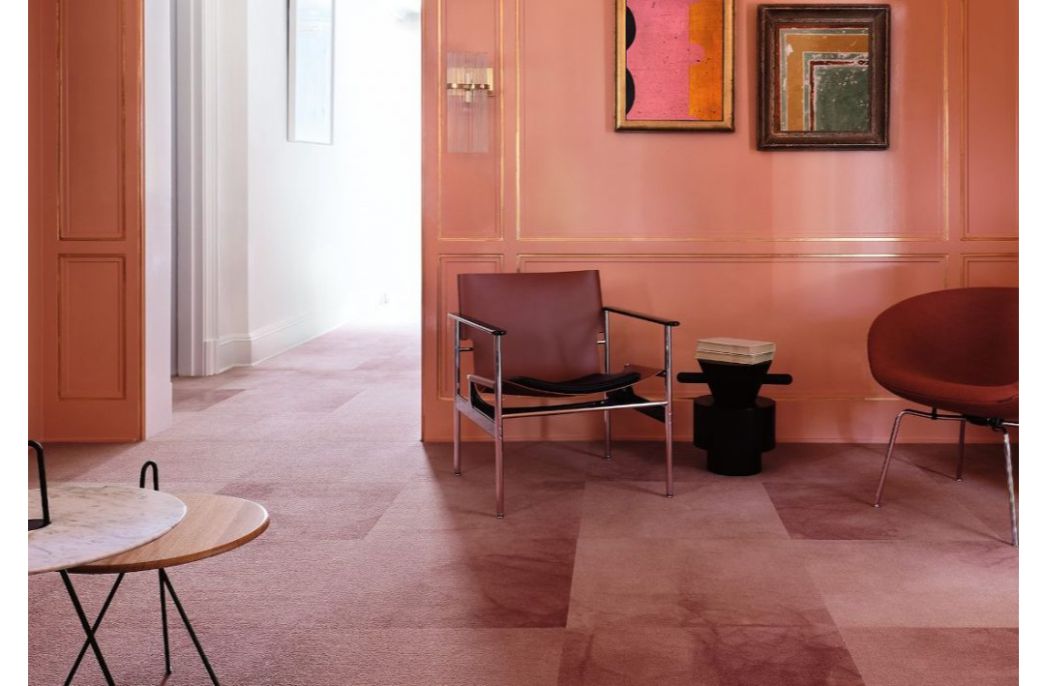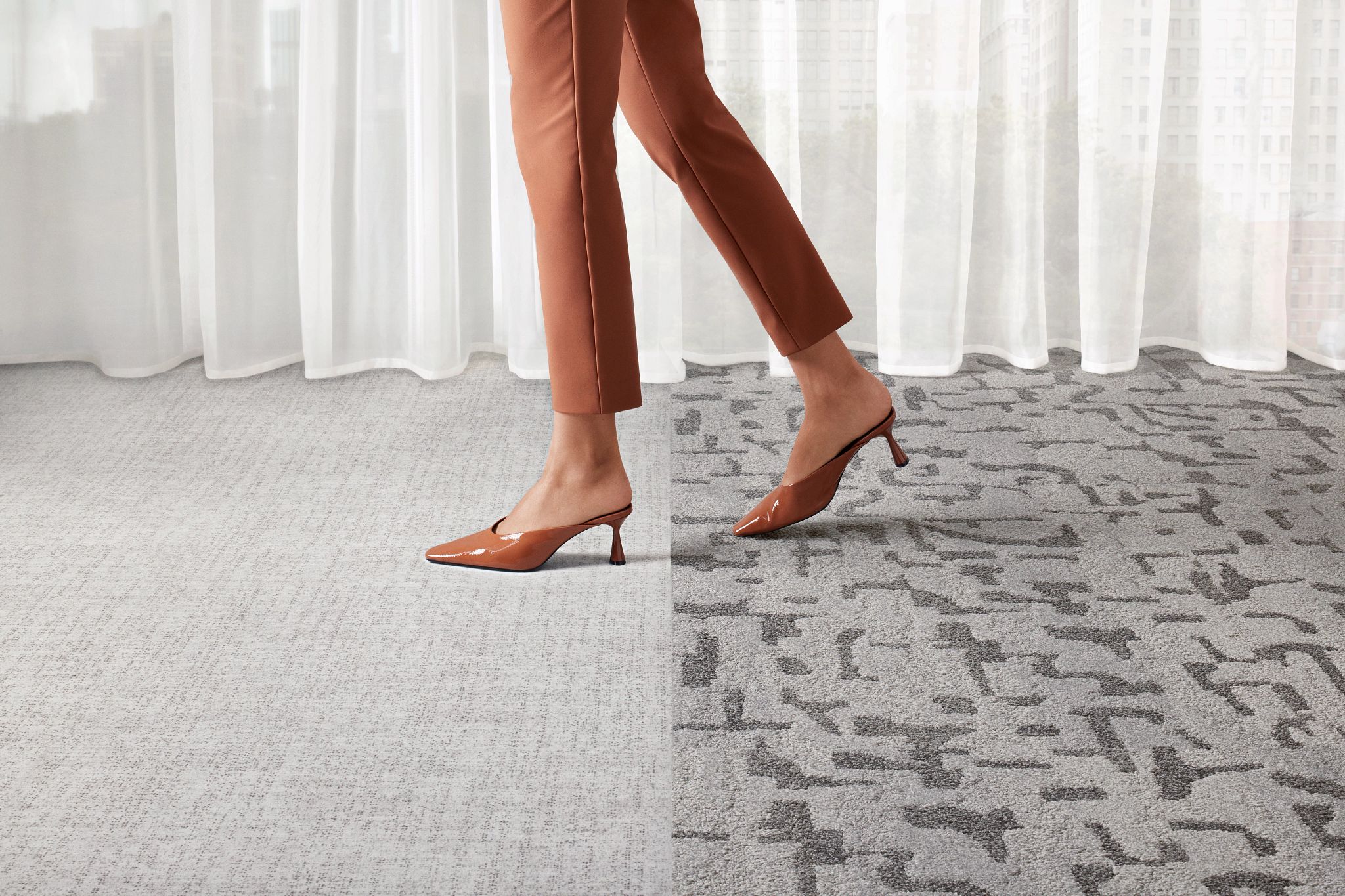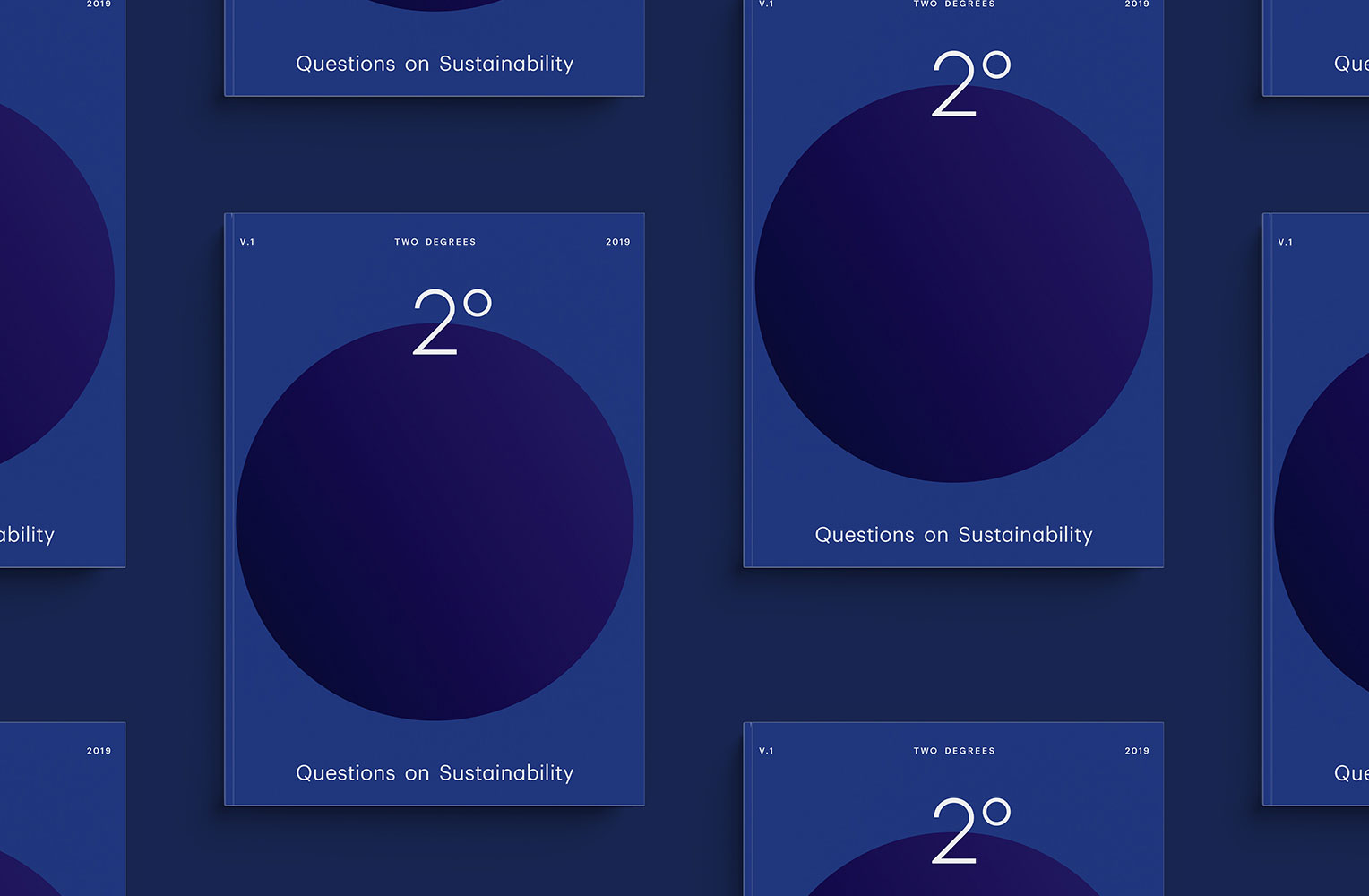
Four to the floor: carpet design with Marcy Ewing
Four to the floor: carpet design with Marcy Ewing
Share
Design is multi-faceted – from interiors and furniture through to textiles and buildings, but have you ever stopped to consider what goes into designing carpet? What kind of skills are required, what considerations are needed for successful patterns? These are the questions we asked Marcy Ewing, the global studio design director at Shaw Contract. Ewing, who was recently visiting Australia, caught up with ADR to talk about her niche field.
Hailing from the US, Ewing began her training at the College of Textile and Science at the Philadelphia University before going on to work with women’s wear textiles. A move to Georgia, where Shaw Contract’s head office and manufacturing plant is based, introduced her to the world of carpet design.
“In our program at school there was maybe one paragraph in a textbook about carpet and tufting and then I never thought about it again. When I was hired by Shaw Contract, I learnt all about tufting and now I get to make a product that I have control over from the beginning to the end,” says Ewing.
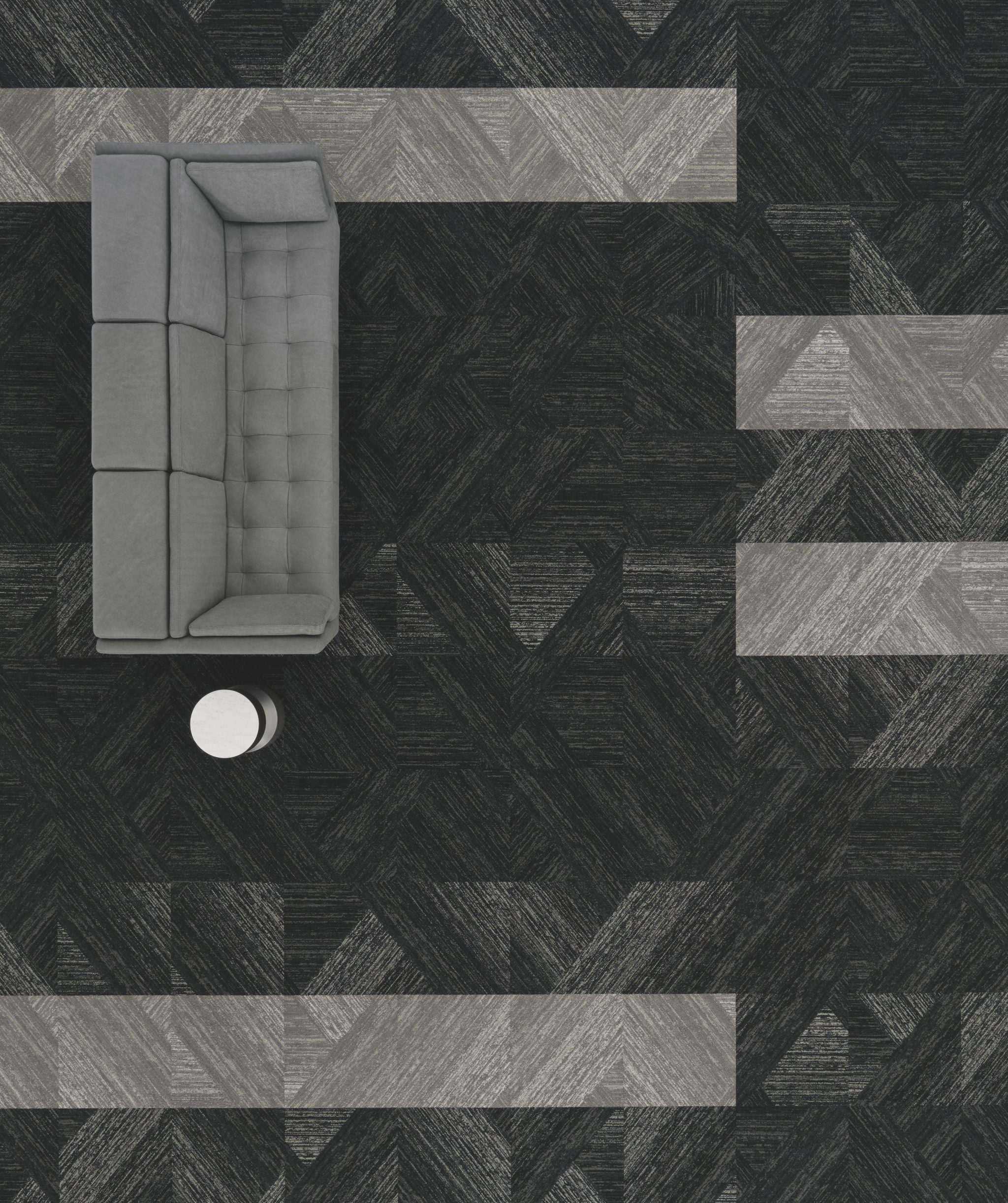
The Noble Materials range.
Making it modular
Ewing loves modular design and the possibilities it holds for the end product. “My passion is modular design and modular flooring because you can change the look by simply moving the carpet around. When it’s a modular design, you get to cut it up and experiment and can sometimes be surprised by what comes out. When you’re doing a broadloom though you have to make sure there aren’t any pattern lines, making sure it looks seamless and doesn’t show any repeats.”
The challenge is coming up with concepts that are versatile to use across multiple sectors, as Ewing explains, “Some of the best collections we’ve designed are the most simple ideas that can create multiple patterns in one collection. Noble Materials is an example where that worked really well – the idea is a fusion between marbles and metals, showing the alchemy of stone and metal. The designs are based on marbles and stones and they each have different book-matching that creates an interlocking design on the floor, while the metallic yarn brings the concept together.”
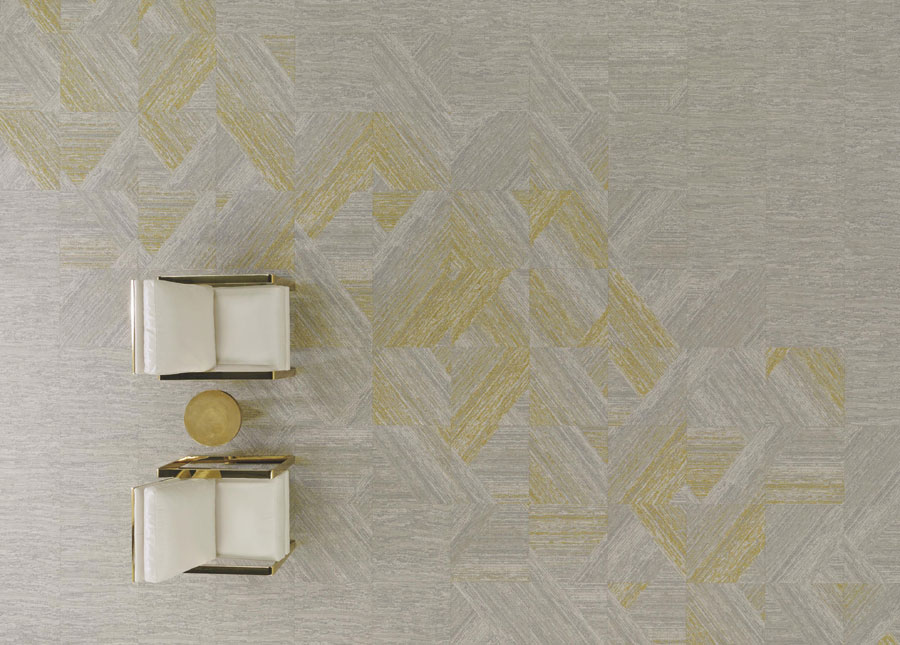
Process: concept to carpet
There aren’t many roles that allow ongoing prototyping and an on-hand iteration process, but Ewing is able to do just that at Shaw Contract’s head office. When explaining the step-by-step process to bring an idea to life, it becomes apparent that collaboration is critical at all points.
“First we start with an idea, refine it down and consider how it would work across multiple sectors. We start by drawing different patterns on a special CAD rendering system, very much like Photoshop.
“We then take the pattern out to the sample machine. We have a sample machine for all of our regular manufacturing machines, which means we can just run down and tuft out a little sample,” explains Ewing.
Being able to create samples and test ideas quickly is imperative to resolving any design concerns, but it also limits risk and waste before things move to a larger scale, as Ewing elaborates. “We try to get the texture and design right, but it’s not always right the first time. You’ve often got to prototype a couple of times – the way the yarns are threaded into the machine can be different so it takes some time to explore what will work best.”
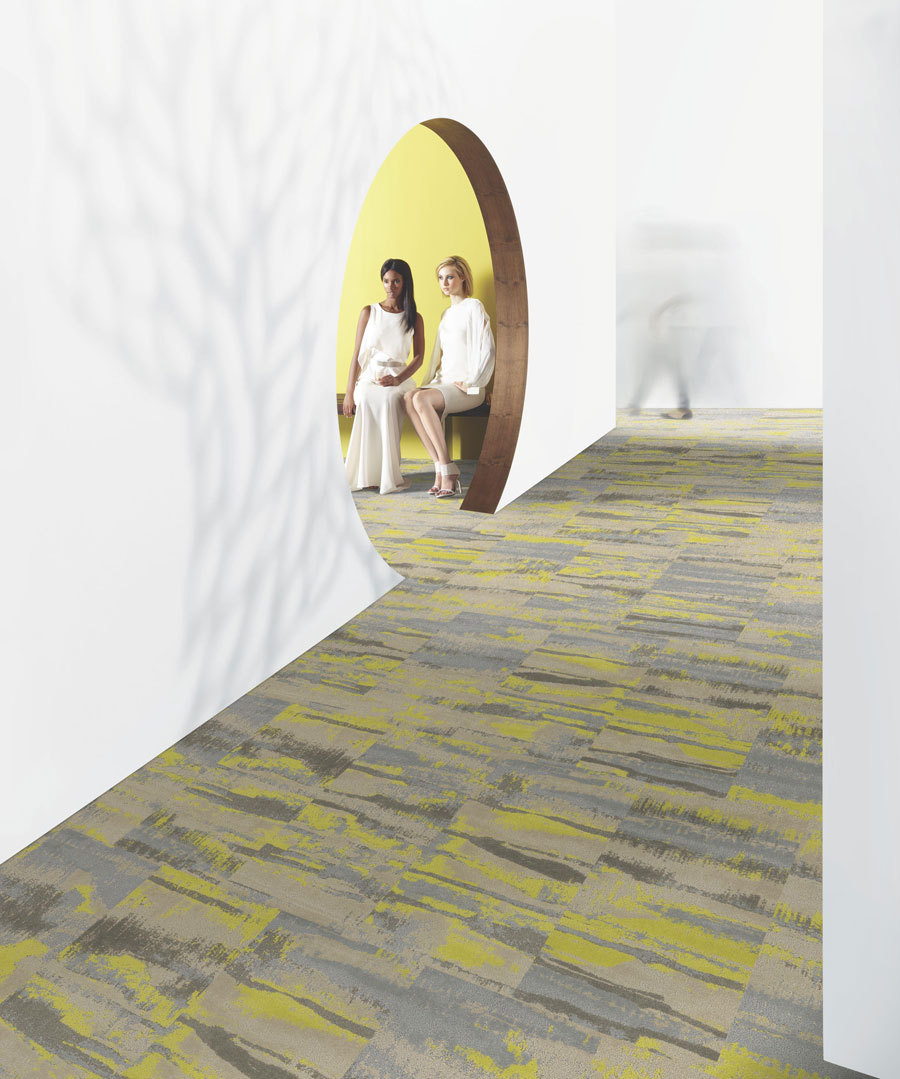
The Park collection is one of Ewing’s favourite.
After this, the design can undergo more strenuous testing in the experimental phase, which involves a full-scale production. Other experts are also brought in to iron out any kinks. “Crucially, at this point, we review the design with the manufacturing team. They look at the patterns and colourways we’ve tufted and they give feedback on anything that might not work based on their knowledge. A design is a collaborative process and sometimes when you’re just too close you can’t think critically about things that could be tweaked,” says Ewing.
From here, a full launch is co-ordinated from the factory in Georgia, out to each region globally. All up, the process usually takes around nine to 10 months, not necessarily including the concepting phase, while thought starters and ideas may also be kicking around for some time before pen is put to paper.
Considerations when designing carpet
Much like architecture or interior design, flooring design requires a combination of creative thinking and technical know-how. Ewing gives a rundown on some of the requirements for a successful flooring designer: “You should understand the machine that you’re drawing for and know how to control it, along with knowing how it might change when using a different machine.
“During our exploration phase, we trial different machine types, as they tuft the patterns in different ways. For example, Noble Materials uses a colour point machine, which is like paint by yarn. The yarns will go exactly the way you draw them on your pattern, whereas if you did the same design on a different machine you wouldn’t have the same diagonal threads, it would be more sculpted as opposed to having the finer, softer details that make it feel more organic.”
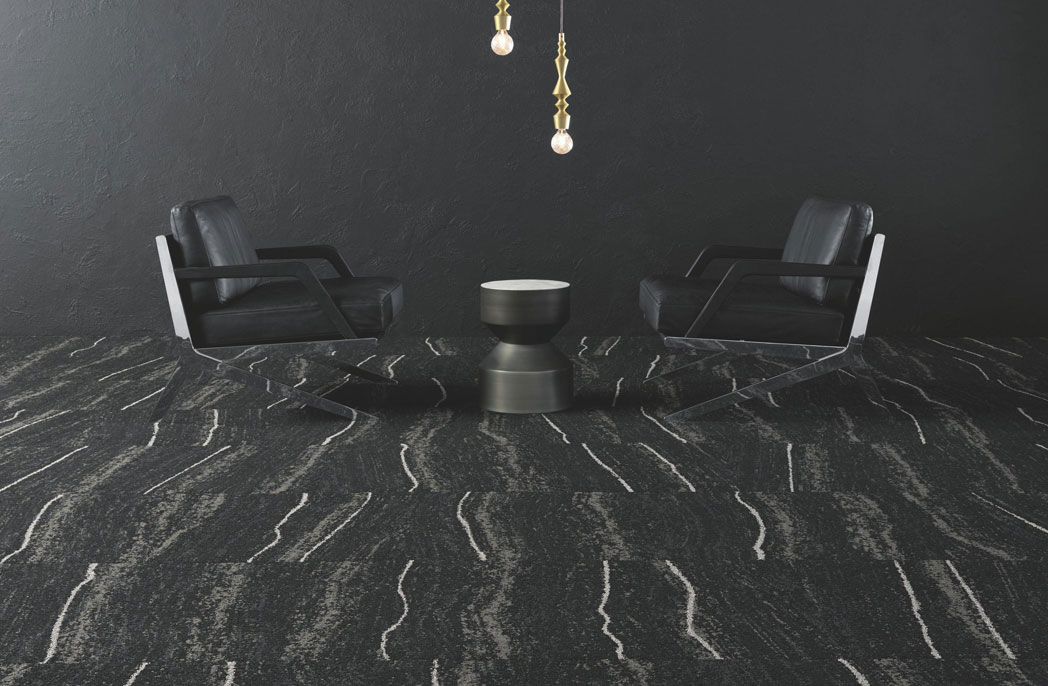
For something that we walk on every day, the process to design well made, sustainable flooring that bridges several segments is the culmination of many people’s work, knowledge and input. A finely tuned design and manufacturing process is all just part of the process.
Shaw Contract is a content partner of ADR.
—
Read more about Shaw’s modular flooring solutions here.
You Might also Like


